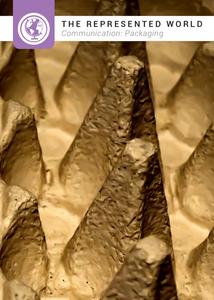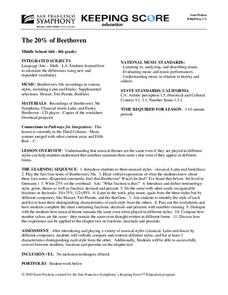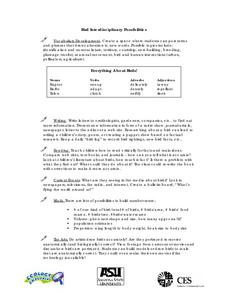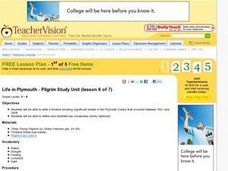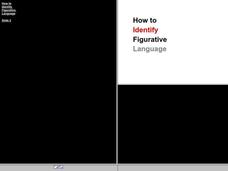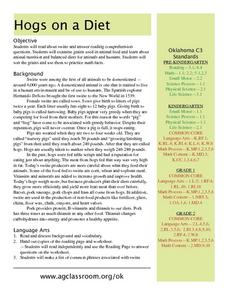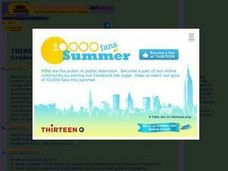Curated OER
Nellie Bly's Newspaper Club: Introducing the Science of Writing
Students evaluate a video about Nellie Bly, a famous reporter from the 19th century. They consider what makes a high-interest news article, write an essay in pairs and present it a literary tea.
Curated OER
What Makes Our Community Special?
Explore websites, complete research, and use technological tools to create a final multimedia presentation on what makes a community special. Learners of all ages work with a partner to research an interesting aspect of their community,...
Curated OER
12 Days of Christmas
Learners utilize different problem-solving strategies and creative writing when dealing with the words from the song, "12 Days of Christmas." They try to problem solve how may presents were given and then explain their sequence in the...
Curated OER
History of Toys and Games
Students research history of popular toys to learn when those toys were first introduced. They use measurement skills to create an accurate timeline.
Study Champs
Emotions and Interjections
Connect emotions to grammar with a grammar exercise that taps into a little bit of creativity. Given an emotion, learners come up with a matching interjection. There are 10 emotions listed.
Curated OER
Pythagorean Theorem by Graphic Manipulation
There are many different ways to show a proof of the Pythagorean Theorem. Here is a nice hands-on paper cutting activity that shows a graphic representation. You can even challenge your young Pythagoreans to come up with their own...
Indiana Department of Education
The Represented World: Communication—Packaging
Challenge your classes to design and market a new product. Collaborative groups use geometry skills to create packaging for their products. Finally, they plan a marketing strategy to present to a marketing specialist.
Smithsonian Institution
Watching Crystals Grow
Amazing science can sometimes happen right before your eyes! The class gets cozy as they watch crystals grow. They use Epsom salts, rocks, and food coloring to create crystals. They'll observe the entire process, documenting every step...
San Francisco Symphony
The 20% of Beethoven
Compare Beethoven's fifth symphony to latin music and disco. Learners will listen to and discuss the elements found in the first part of Beethoven's composition. They'll then look for the same elements in Tito Puente and Bee Gees songs....
Curated OER
My Family and Our Nationality
After completing the activities included here, your beginning foreign language speakers will be able to name family members, identify a family's place of origin, and write short sentences about family members. They start by listening to...
Curated OER
MAISA and the REMC Association of Michigan
Learners complete online research to study geography's impact on weather. In this geography and weather lesson, students research weather in their city for ten days using an online website. Learners bookmark the site, enter data into a...
Curated OER
Why Vote? A Public Awareness Campaign
Students examine the structure of local government and determine why citizens vote. In this civics lesson, students listen to a lecture about the structure of local government and then encourage others to exercise their right to vote.
Curated OER
Bird Interdisciplinary Possibilities
Students explore birds, their territory, breeding, and seasonal movement. They research and collect information on birds through writing letters to ornithologists, reading in books, comparing web sites, and observing pictures. Students...
Curated OER
A Tough Nut to Crack
Students study the origins and background of the pecan. For this agriculture lesson students divide into groups, complete an activity and worksheets.
Curated OER
Mathematics and Computers
Seventh graders discuss computers and their makers. In this lesson, 7th graders choose a mathematician of their choice and discuss how they impacted our world. They research a favorite mathematician based on tiers.
Curated OER
Satellite Eyes
Students explore the ways in which satellite images provide details of the Earth's surface and how they are capable of taking digital images of the Earth from space they vary in resolution and breadth. They view how cameras and lenses...
Curated OER
Life in Plymouth - Pilgrim Study Unit
Students write a timeline showing significant events in the Plymouth Colony that occurred between 1621 and 1628. They define and illustrate key vocabulary words which are imbedded in this lesson plan. This simple activity is designed to...
Curated OER
Are You an Animal Safety Sleuth?
Students complete activities to investigate natural disasters and the impact on animals. In this natural disaster and animal safety lesson, students discuss the importance of safety procedures. Students use a map of their school and...
Curated OER
How To Identify Figurative Language
Students investigate writing techniques by analyzing a chart. In this figurative language lesson, students define similes, metaphors and identify the difference between them and personification. Students demonstrate their understanding...
Curated OER
Hogs on a Diet
Students discuss the meaning of "hogging" something, and speculate on the origin of this phrase. They attempt to guess the contents of a shoe box (without looking inside). Students view feed grains and discuss animals that eat these...
Curated OER
There's Gold in Them Thar Ratios
Students draw a model of the bunny problem which generates the Fibonacci Sequence, spirals generated from golden rectangles and golden triangles; identify the golden ratio in the human body, and find the Fibonacci numbers in nature.
Curated OER
The Dewey Decimal System -- Cataloging Collections
Young scholars categorize their private book collections as a precursor to learning the principles of the Dewey Decimal System. They use the Internet to gain a better understanding of the Dewey Decimal System.
Curated OER
Leveled Problem Solving: Circle Graphs
In this circle graphs activity, learners solve 6 word problems based on a circle graph about the most popular classes for sixth graders. Students calculate angle measures of circles for 2 of the problems.
Curated OER
Would You Believe Your Eyes?
Students study the parts and functions of the human eye. They create dodecagons which are twelve-sided figures with twelve equal angles and share these with the class so that each student can begin to see how many different illusions can...






